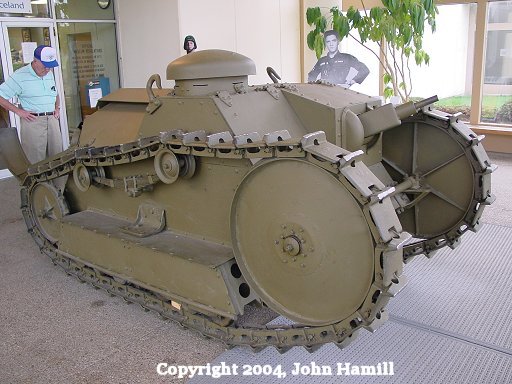
World War I Tanks

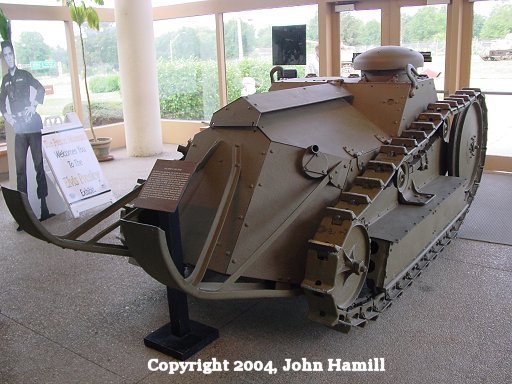
Ford 1918
Built using standard Ford parts, this 3 ton vehicle was powered by two engines and mounted a single machine gun. Only 15 were built, and none saw combat.
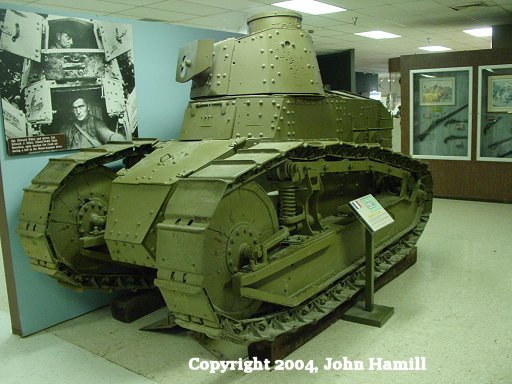
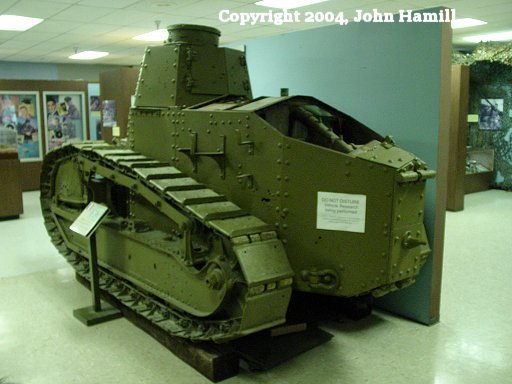
FT-17
The French Renault FT 17 had a top speed of 8mph and could mount a variety of weapons in a revolving turret. Produced in great numbers, the vehicle was also widely used between the wars.
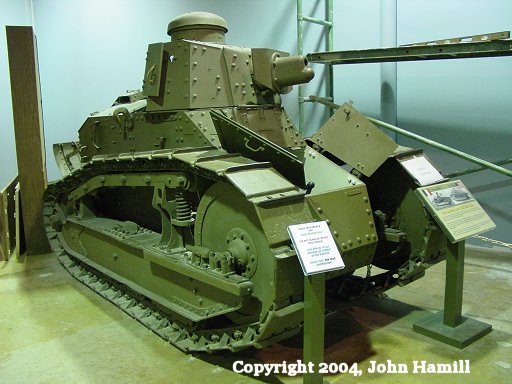
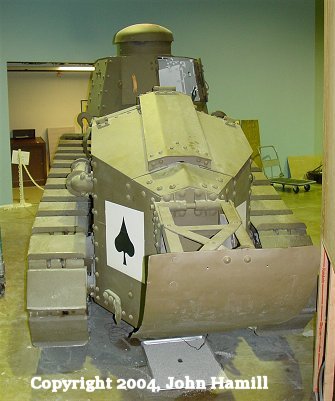
FT-17 American
The United States copied the French FT 17, but used English instead of metric measures.
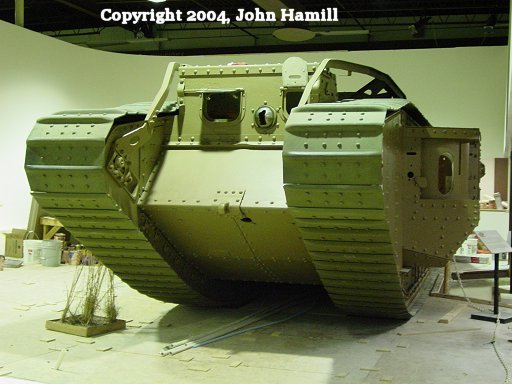
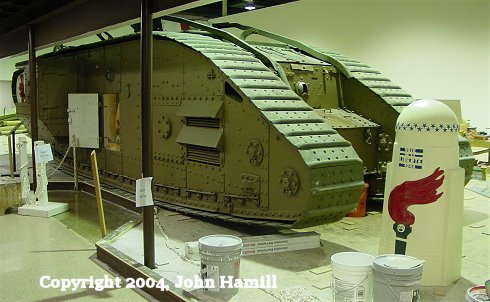
Mark V
This version of the British Mark V, shown here under renovation, was modified to carry 18 infantrymen but still carried two 6 pounders and machine guns
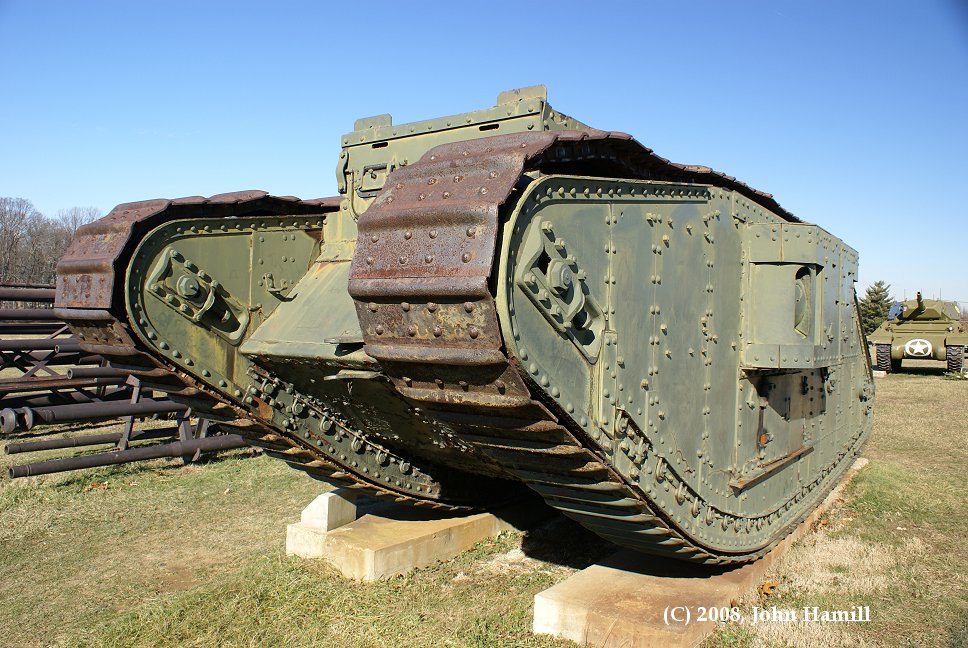
Mark IV - Female
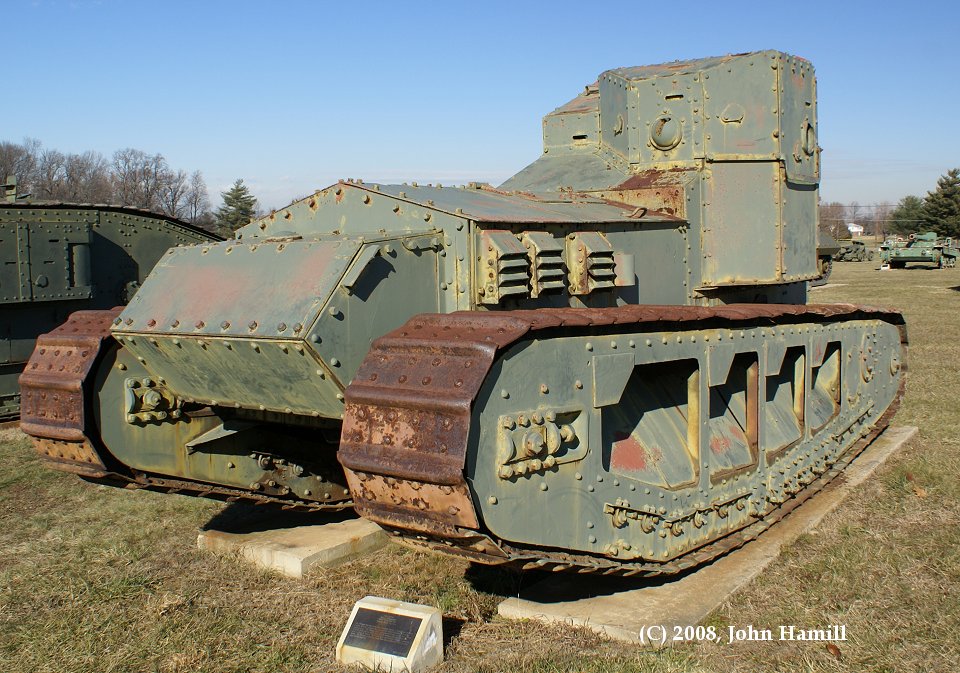
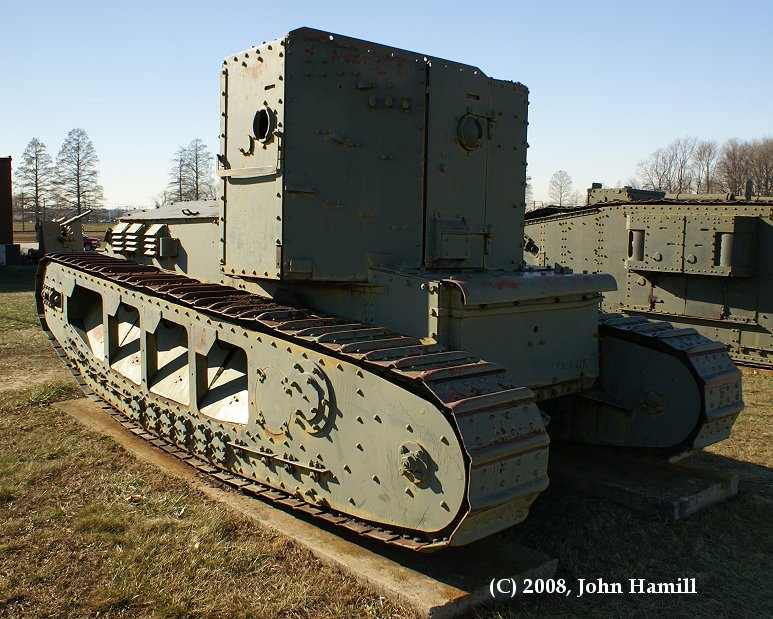
Whippet - Front and Rear
The Mark IV was an improvement over the original Mark I tank, which was first used at the Somme in 1916. With a top speed of about 3 mph, the tank was strictly an infantry support weapon used to clear pathes through wire and provide support with its weaponry. The rhombodial shape assisted in crossing trenches. The male version was equipped with two 6 pounders and four machine guns, and the female with six machine guns.
The Whippet was planned as a tank to exploit the breakthrough in the tradition of the cavalry and was armed with four machine guns. The engine was in the front of the vehicle, and could propel the vehicle at 8 mph. Originally, a rotating turret was planned, but was dropped for mass production. First used in combat in spring 1918, the vehicle was considered successful. In a post war experiment, a Whippet was fitted with a suspension and a better engine reached 30 mph, but this development was ignored.
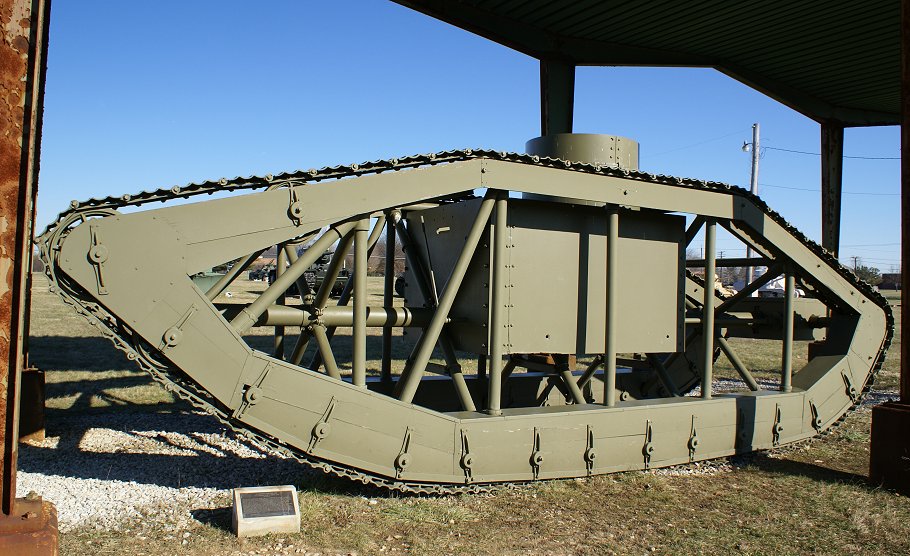
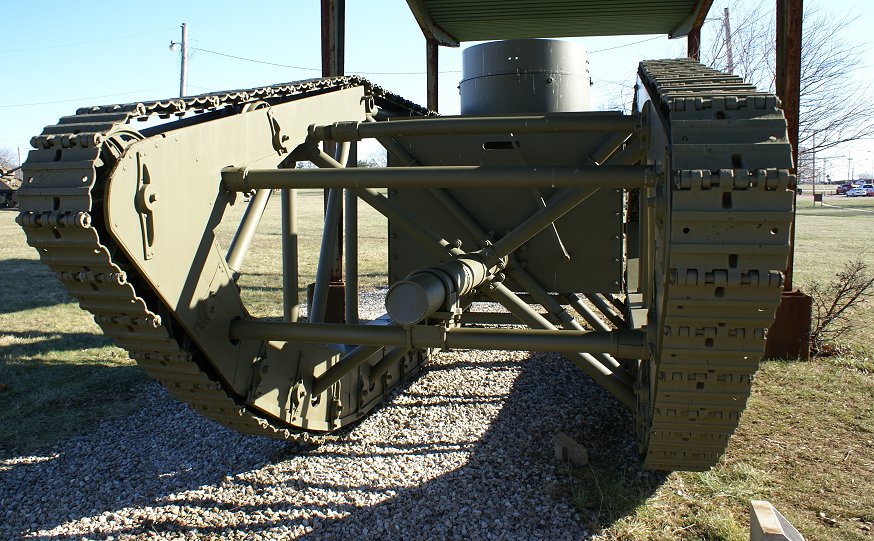
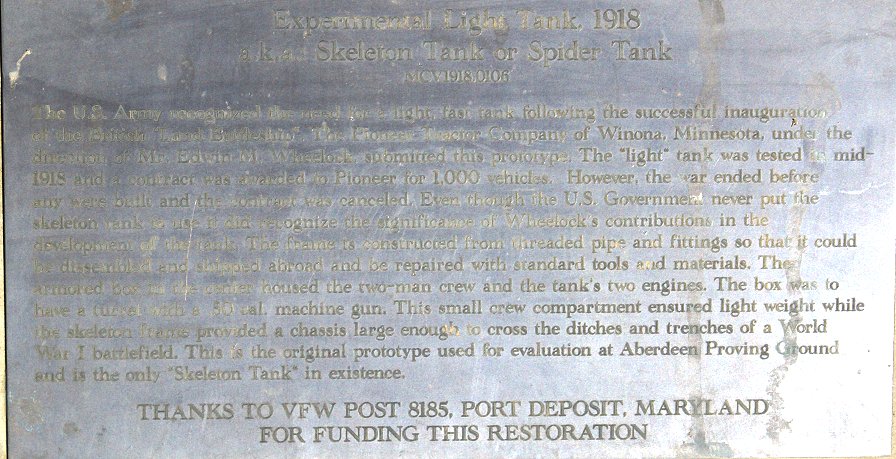
Experimental Light Tank, 1918
aka Skelton Tank
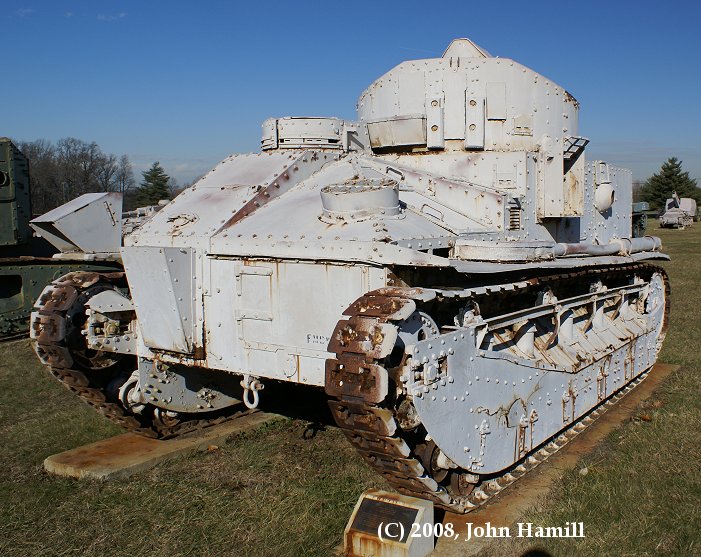
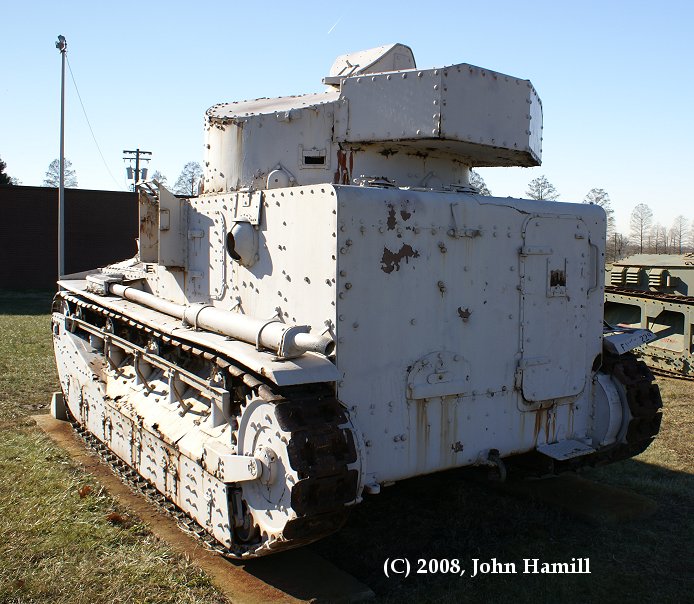
Mk II Medium Tank
The first original British post war tank, the Mk II was the first British tank with a turret. Introduced in 1926, the tank was armed with a 3 pounder and three machine guns and could travel at up to 30 mph.